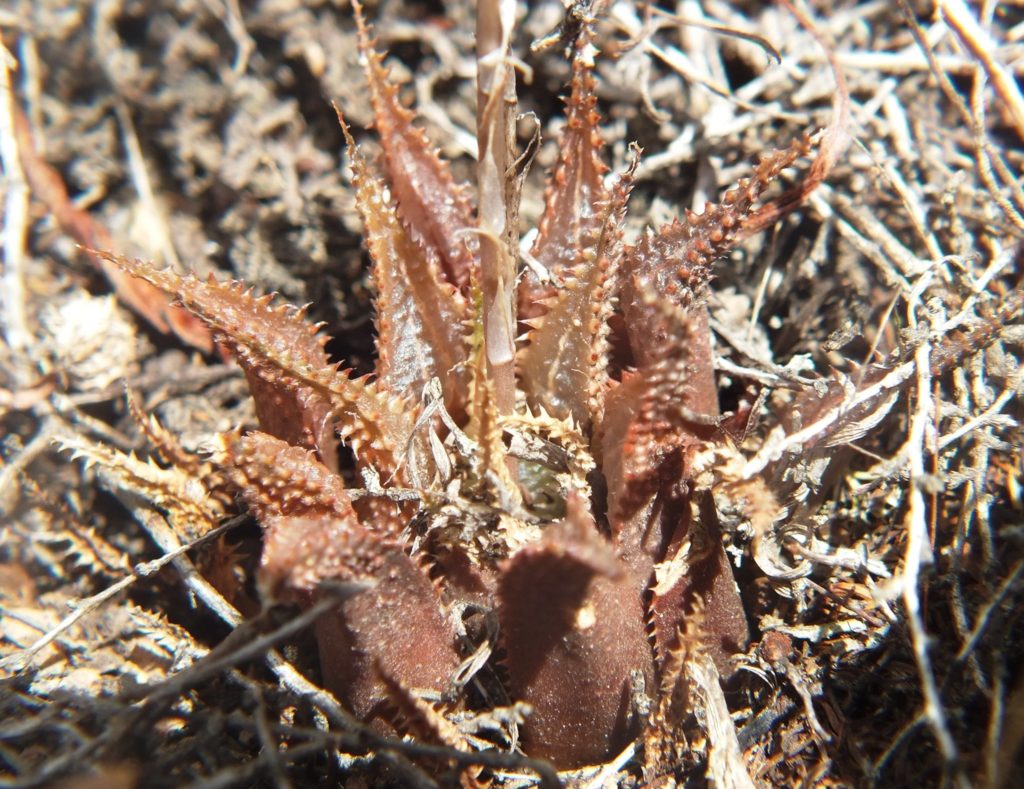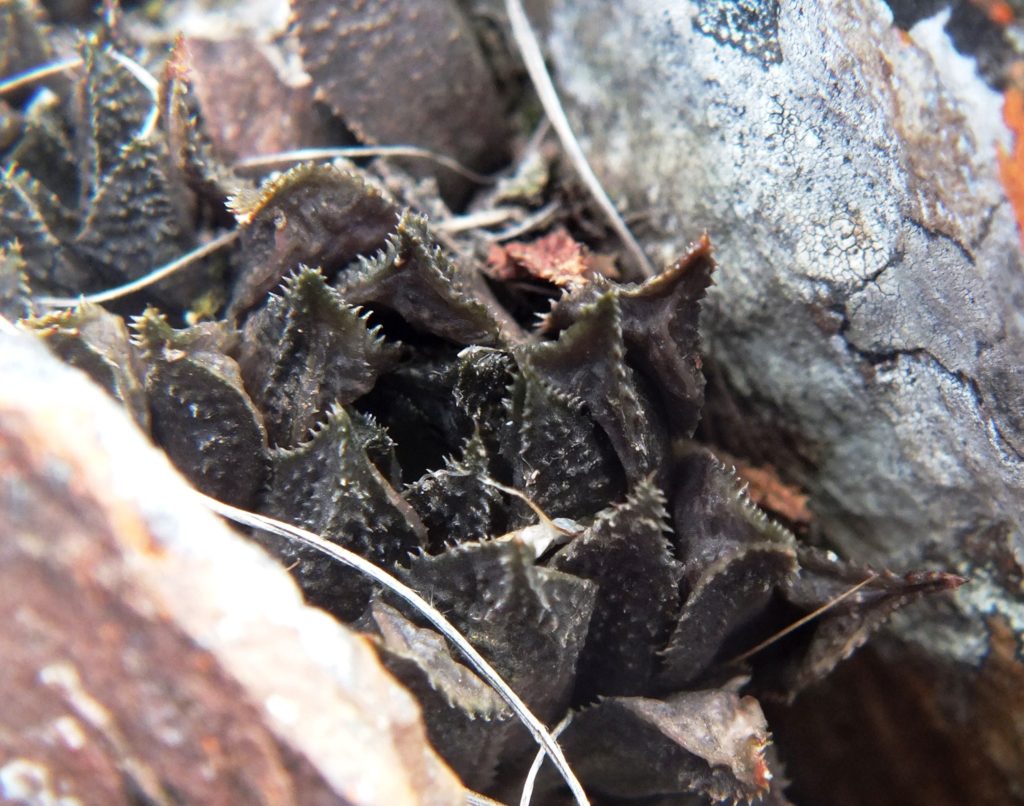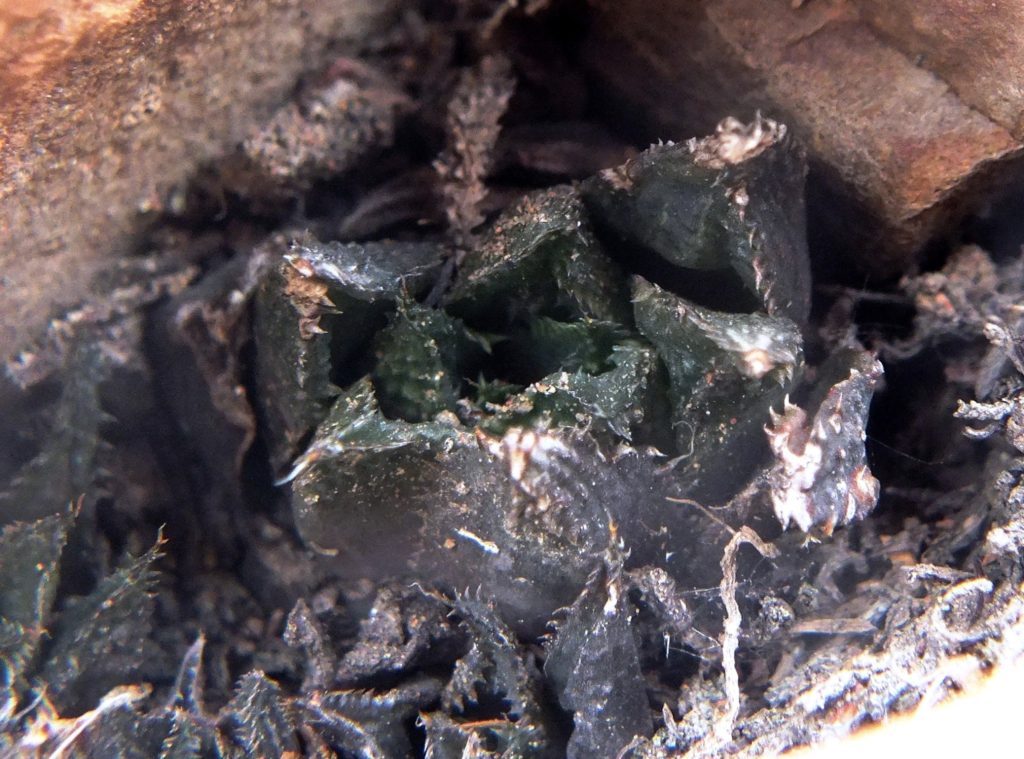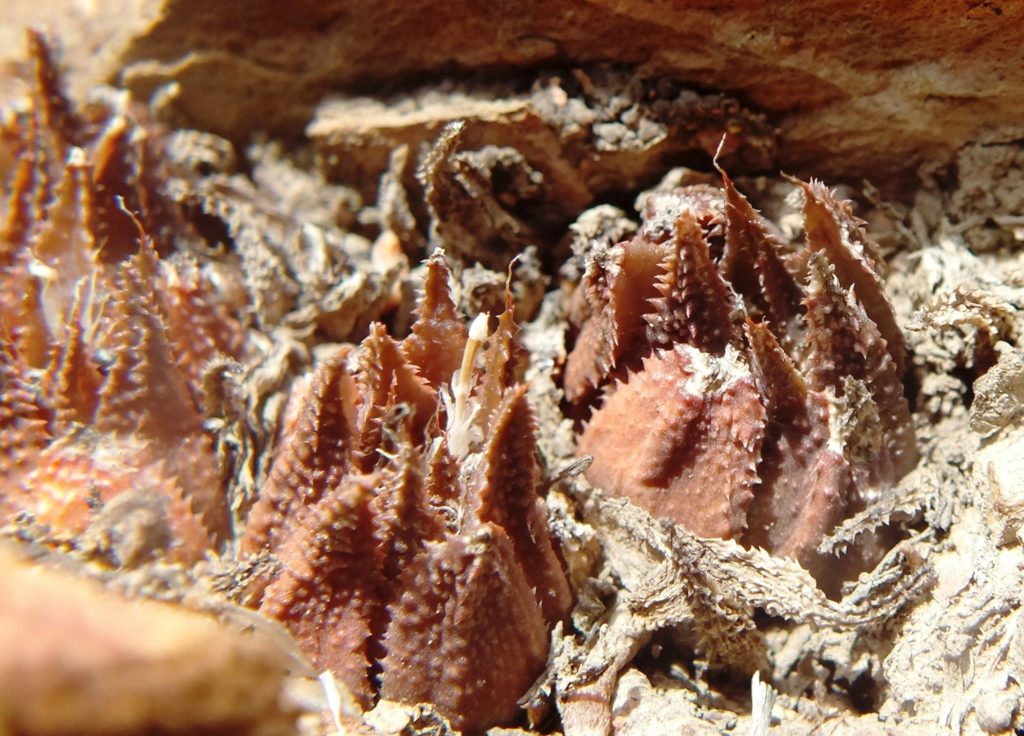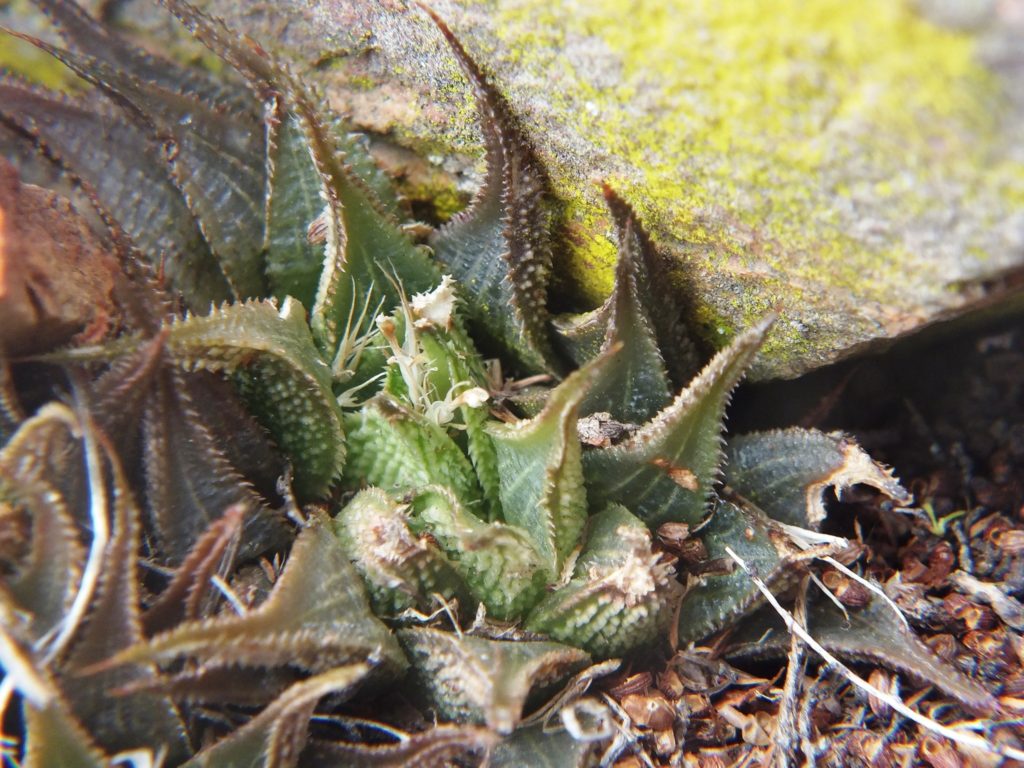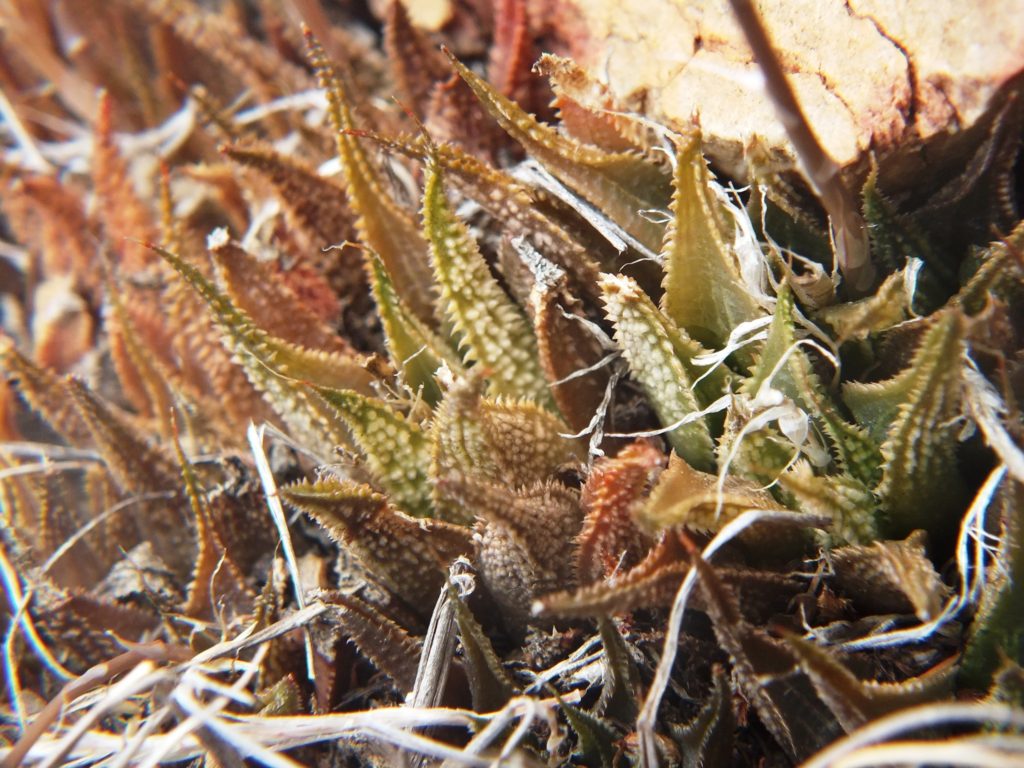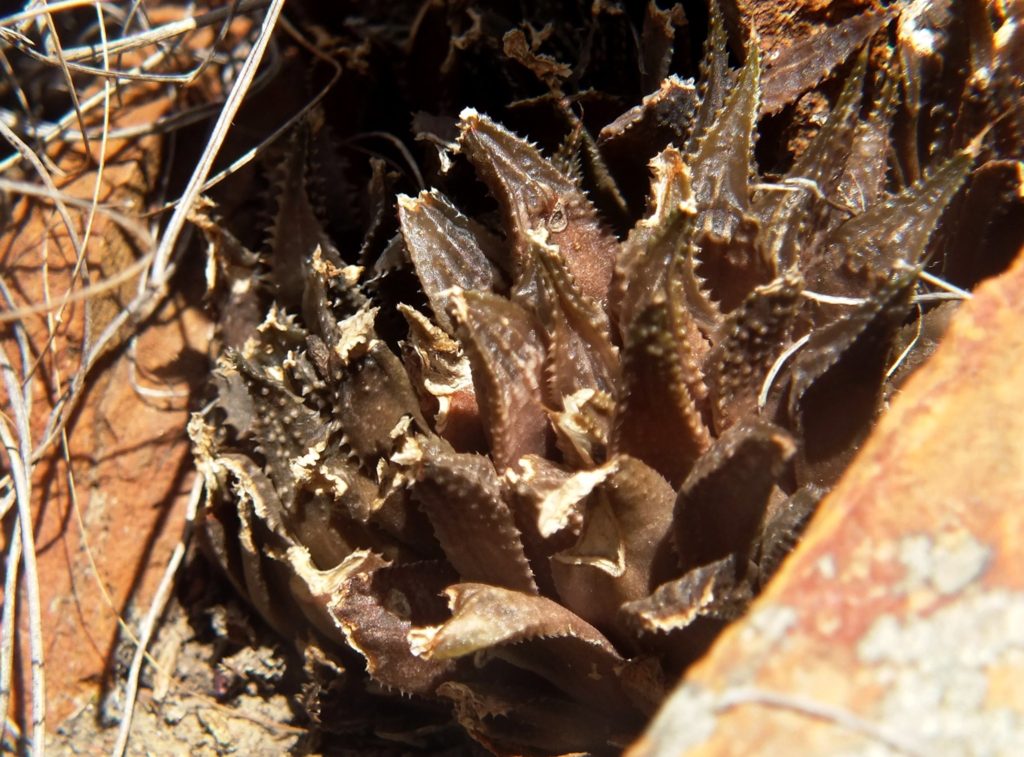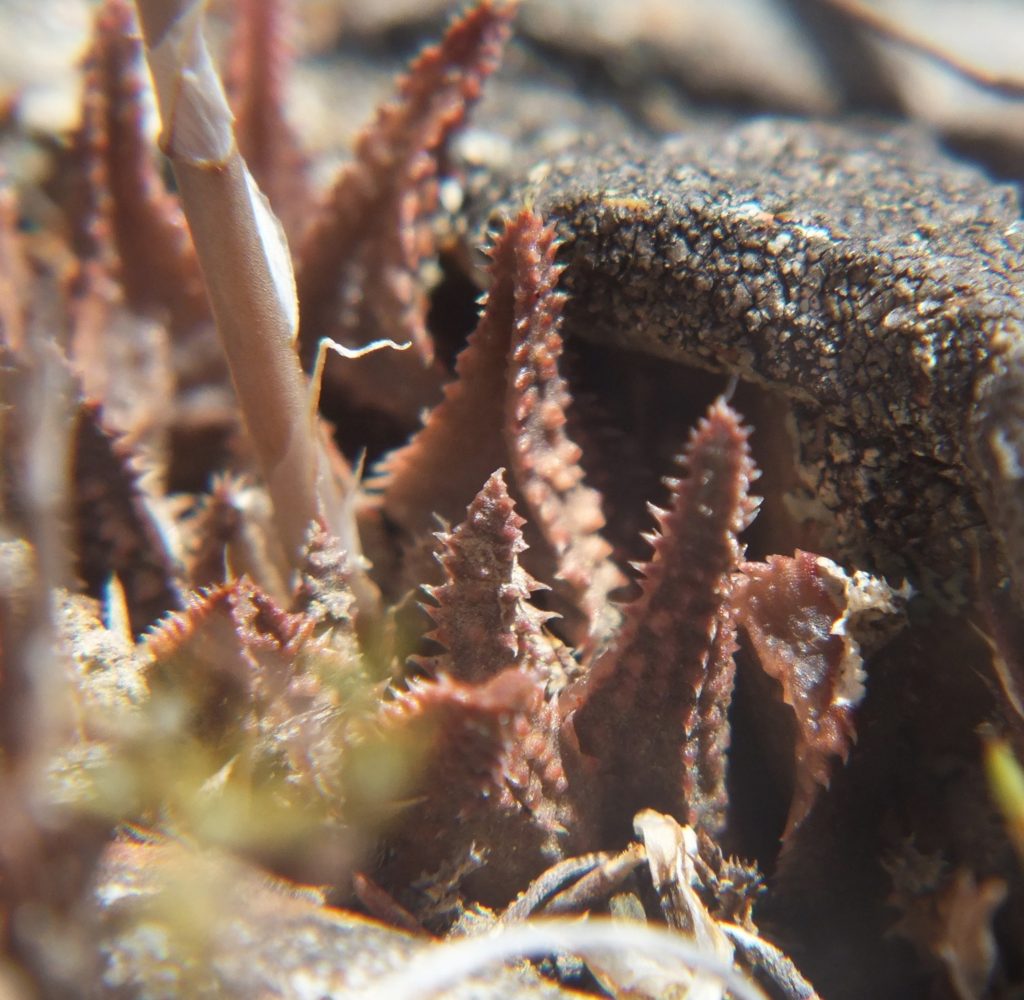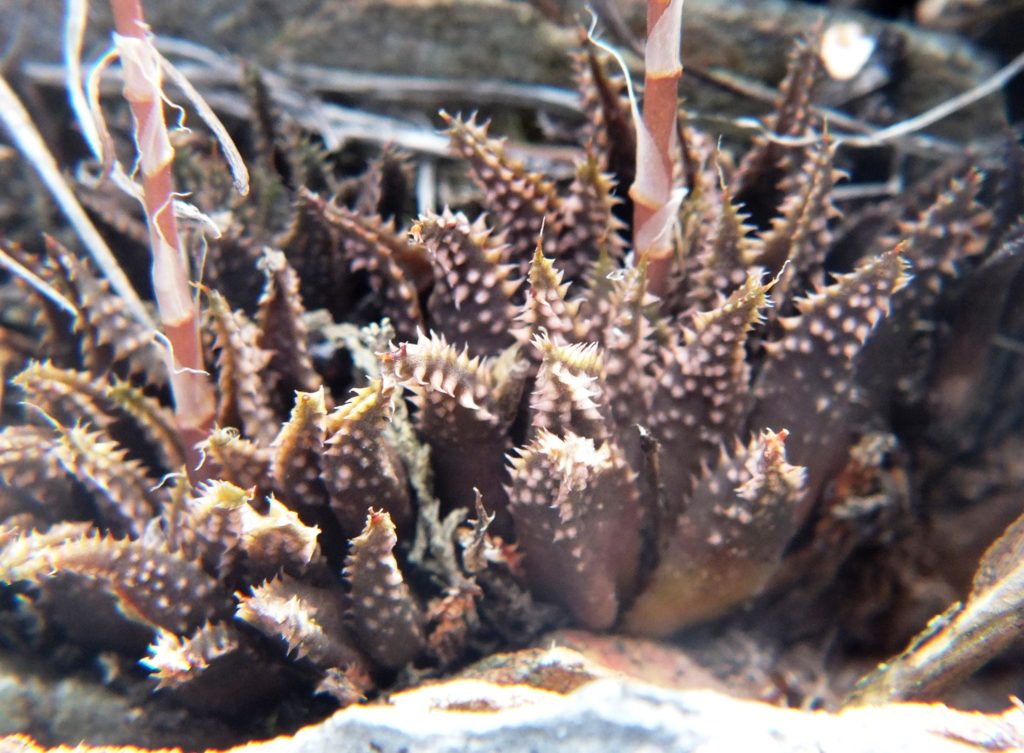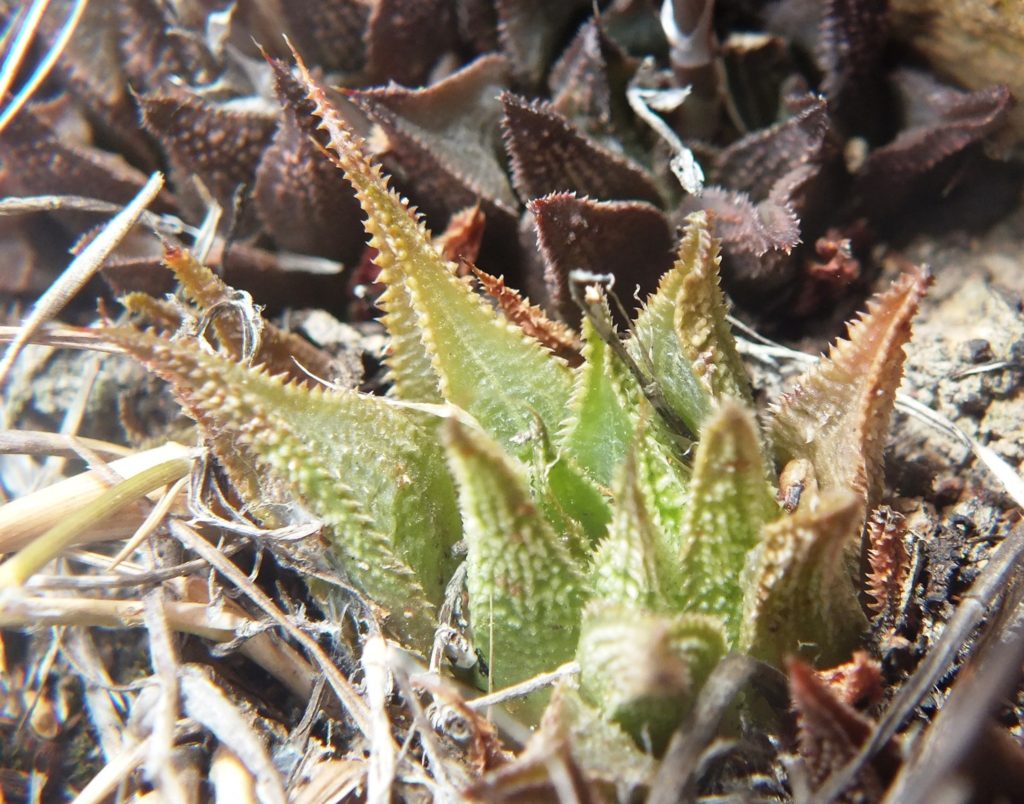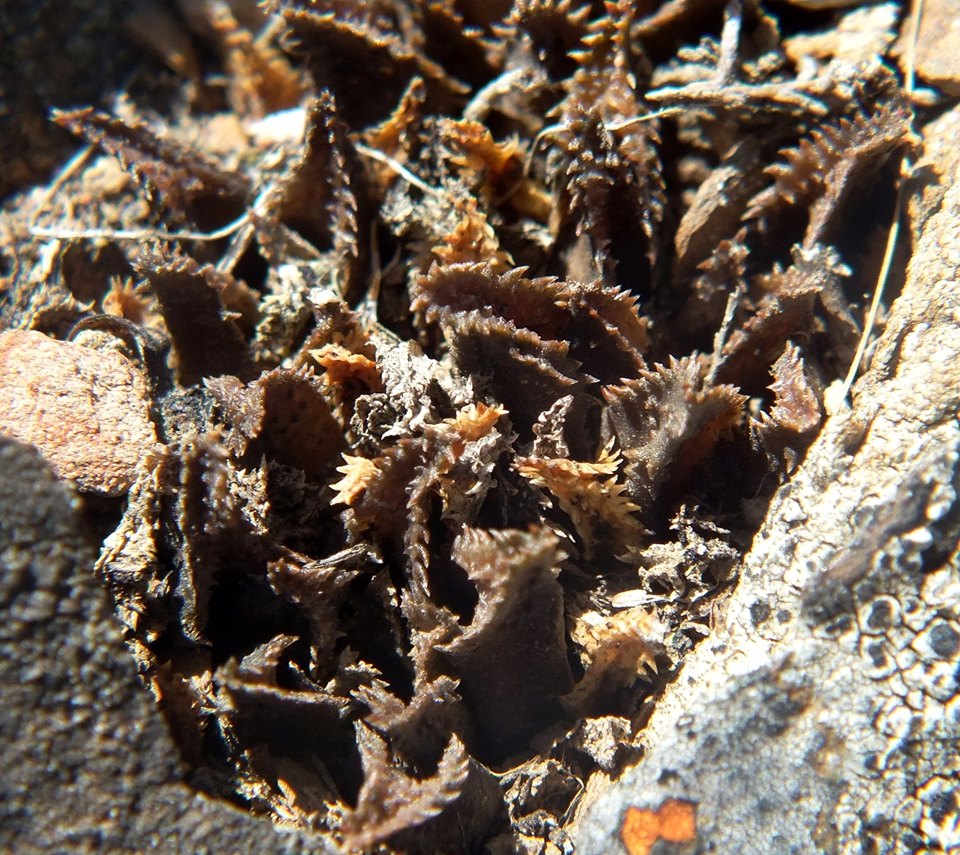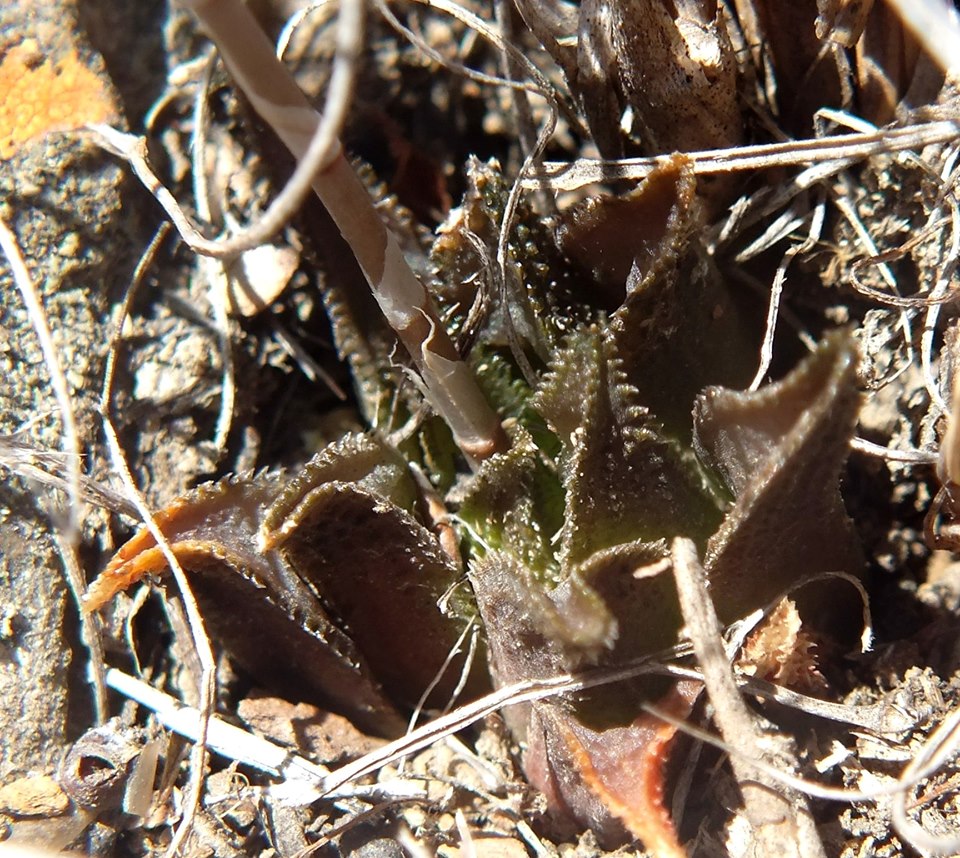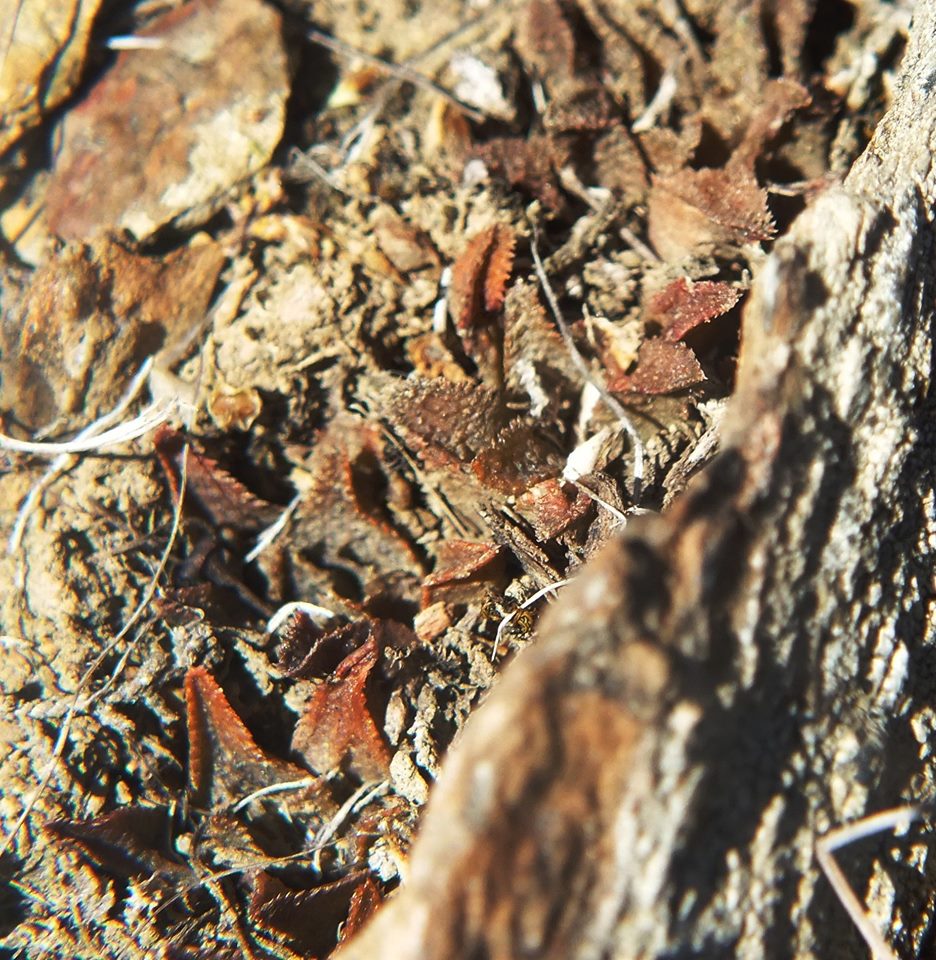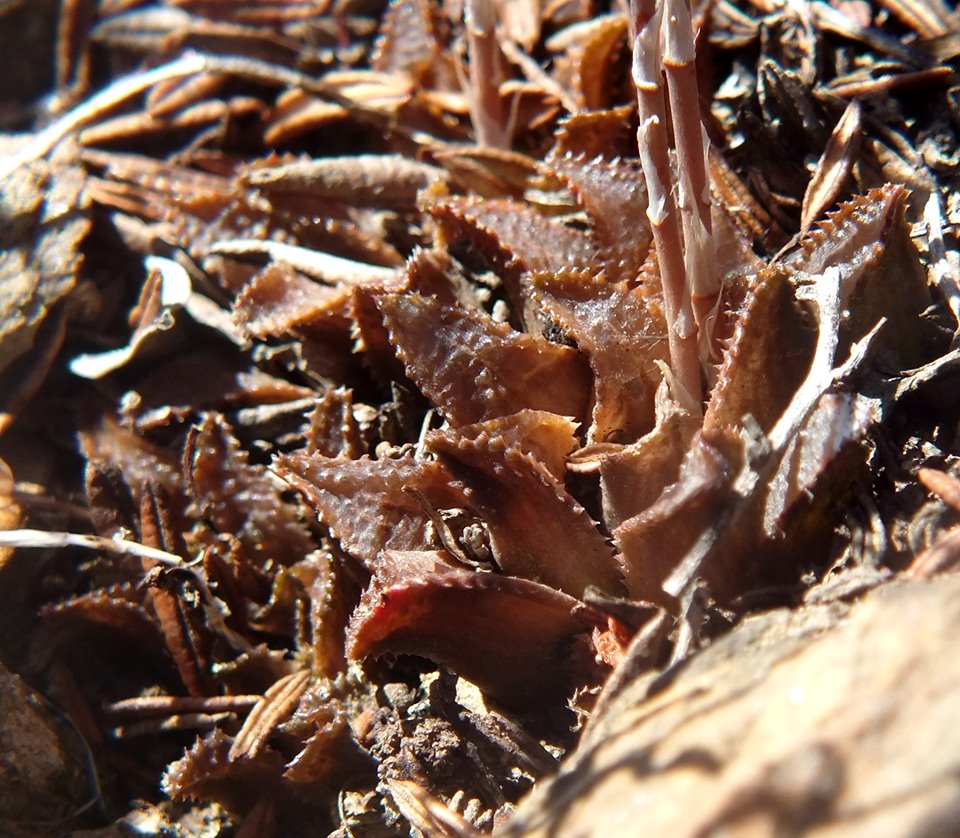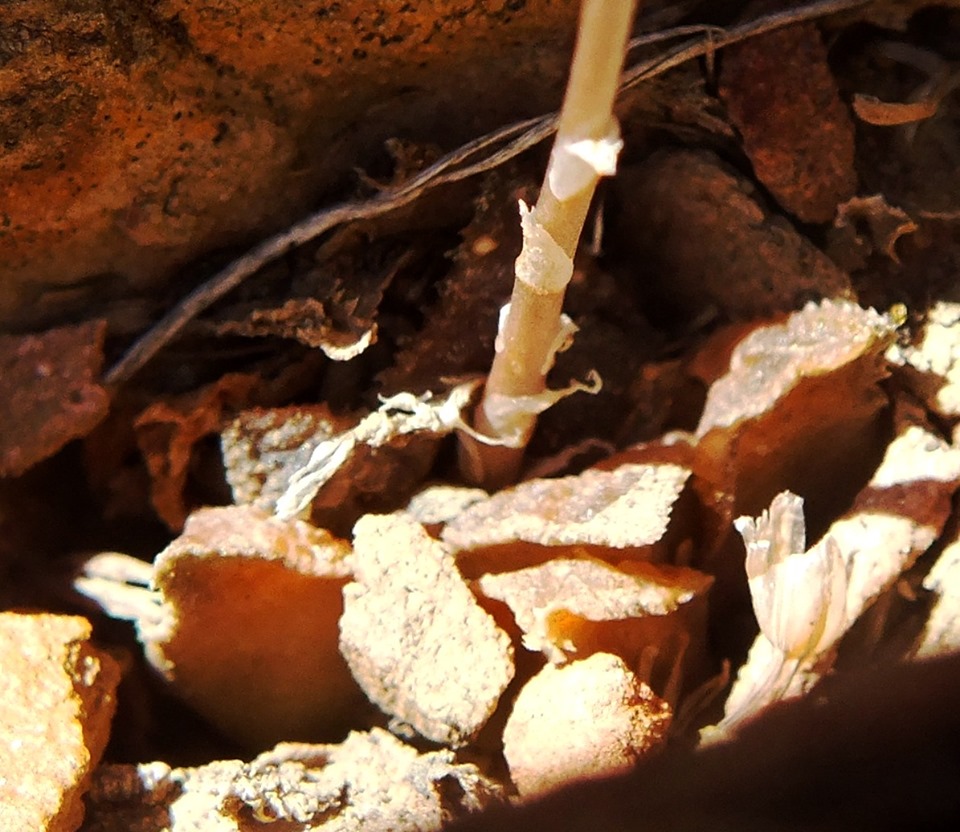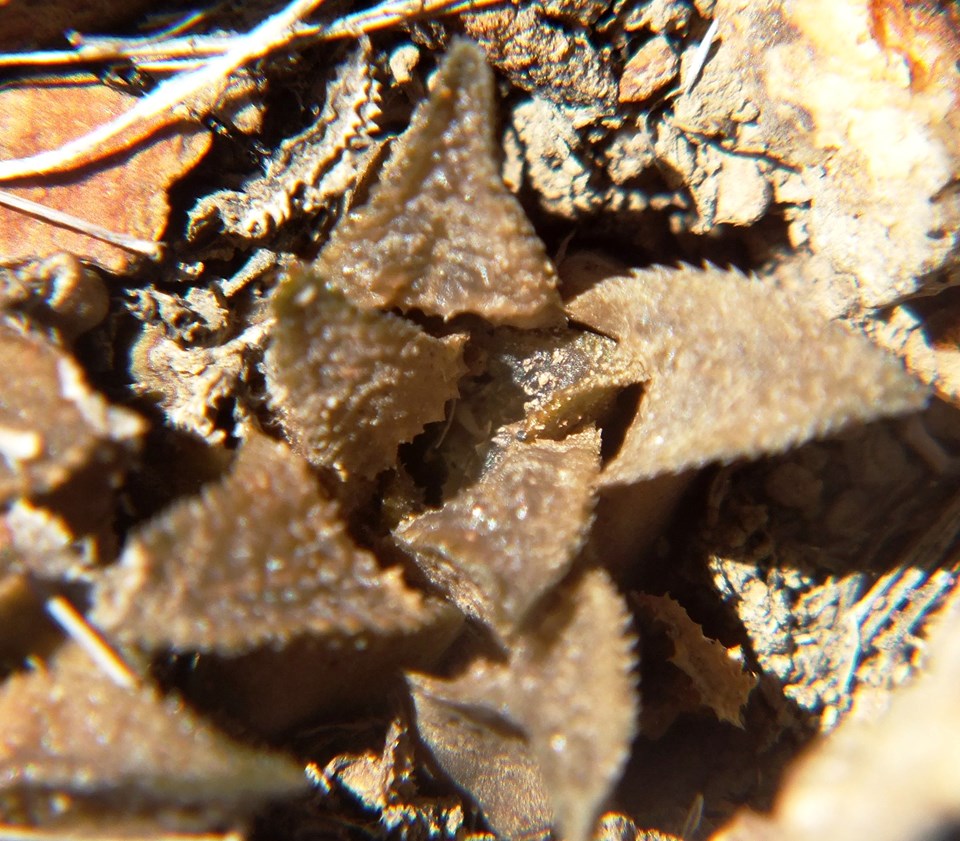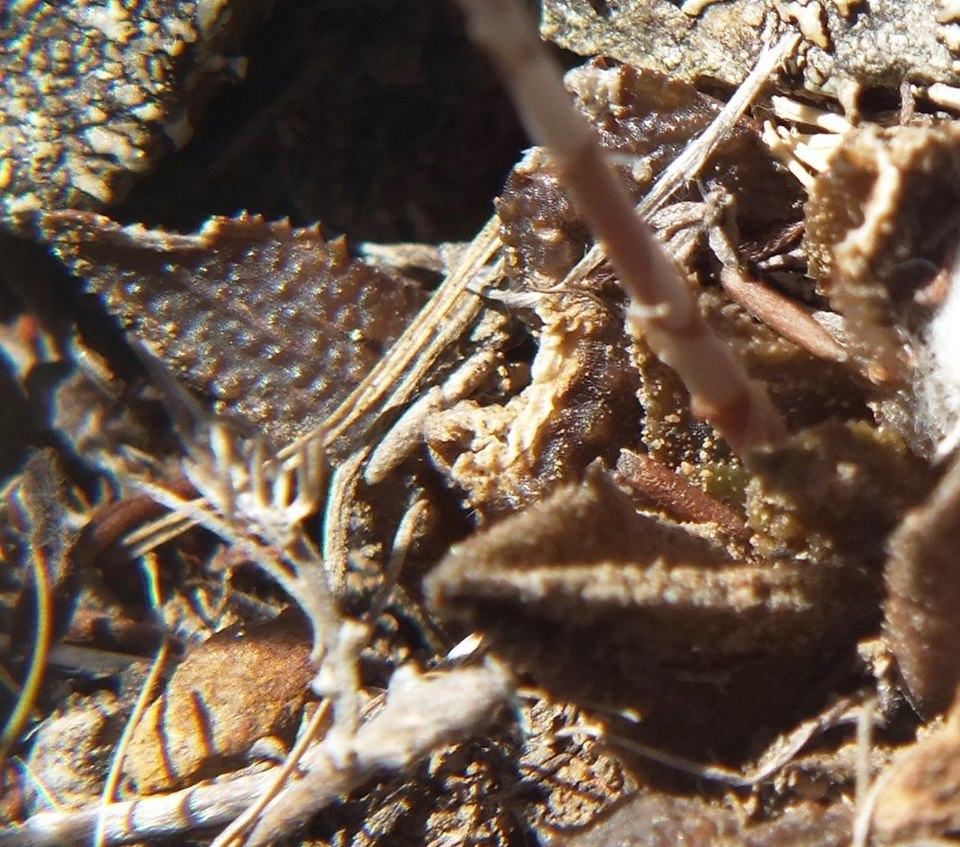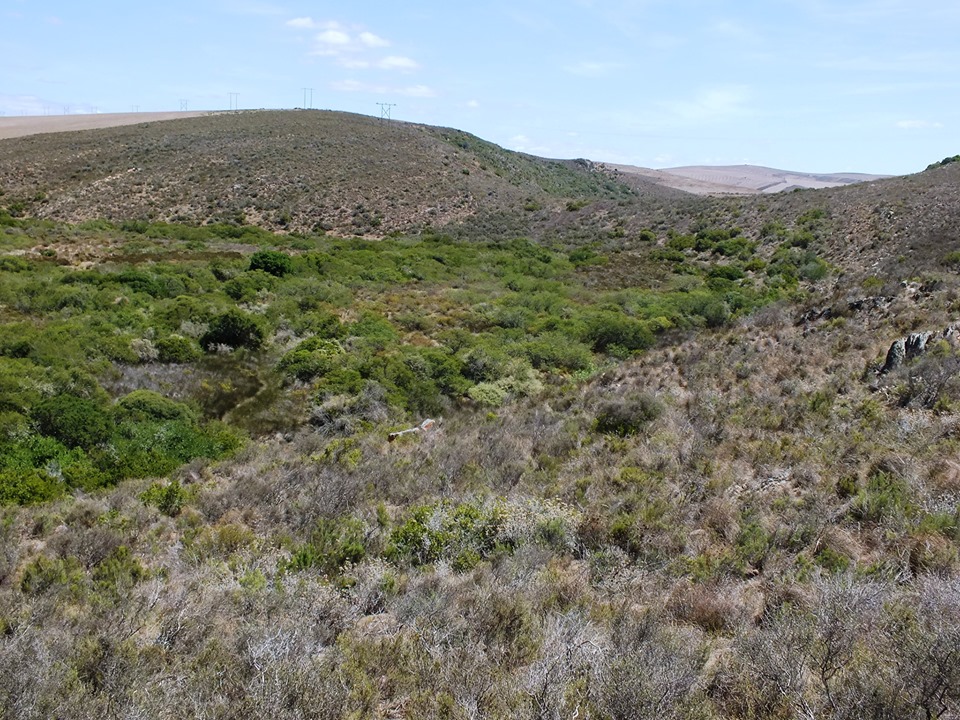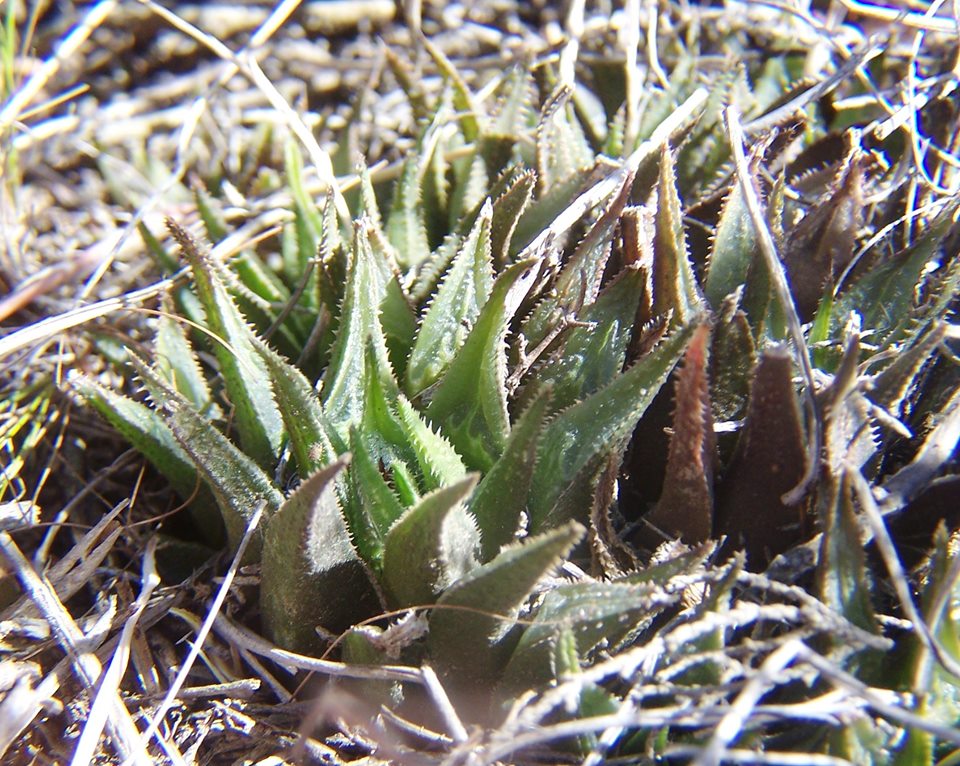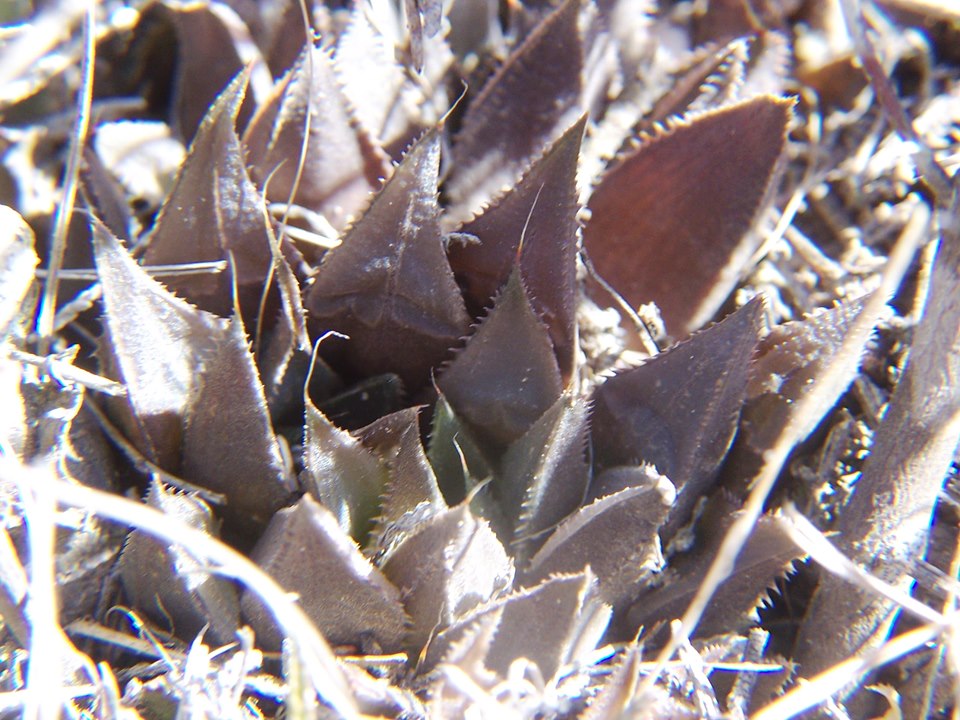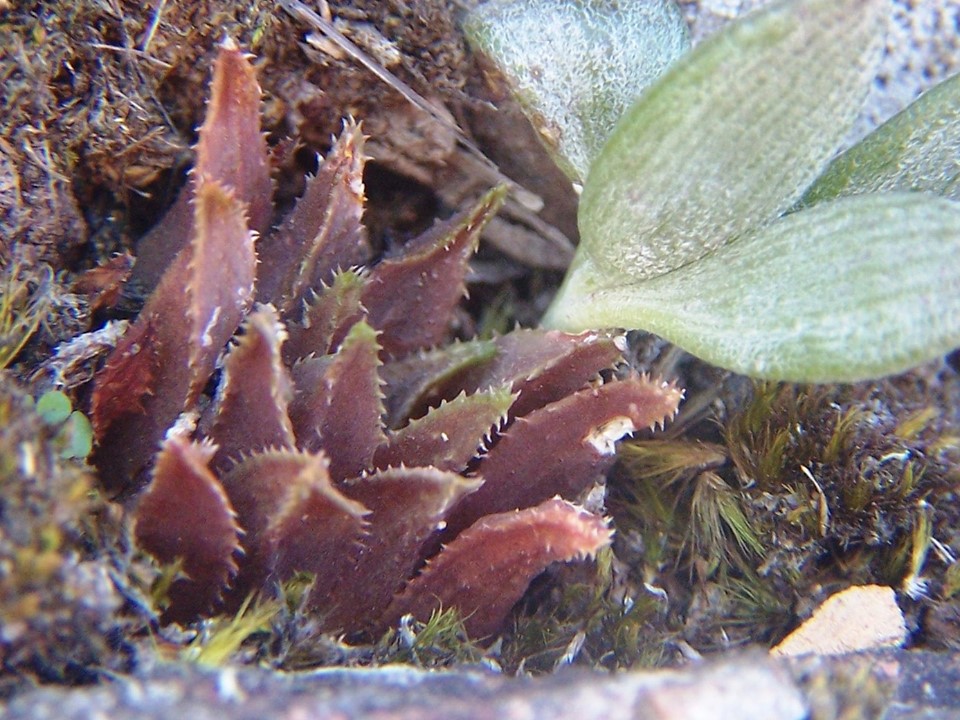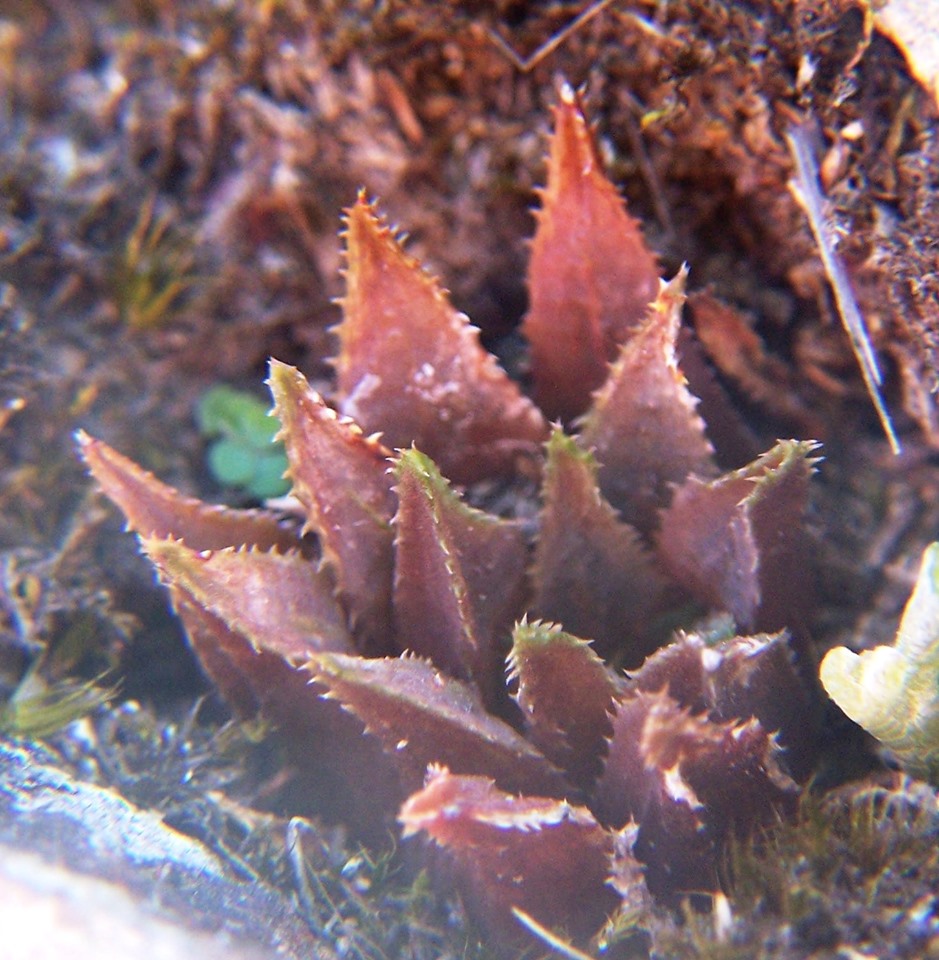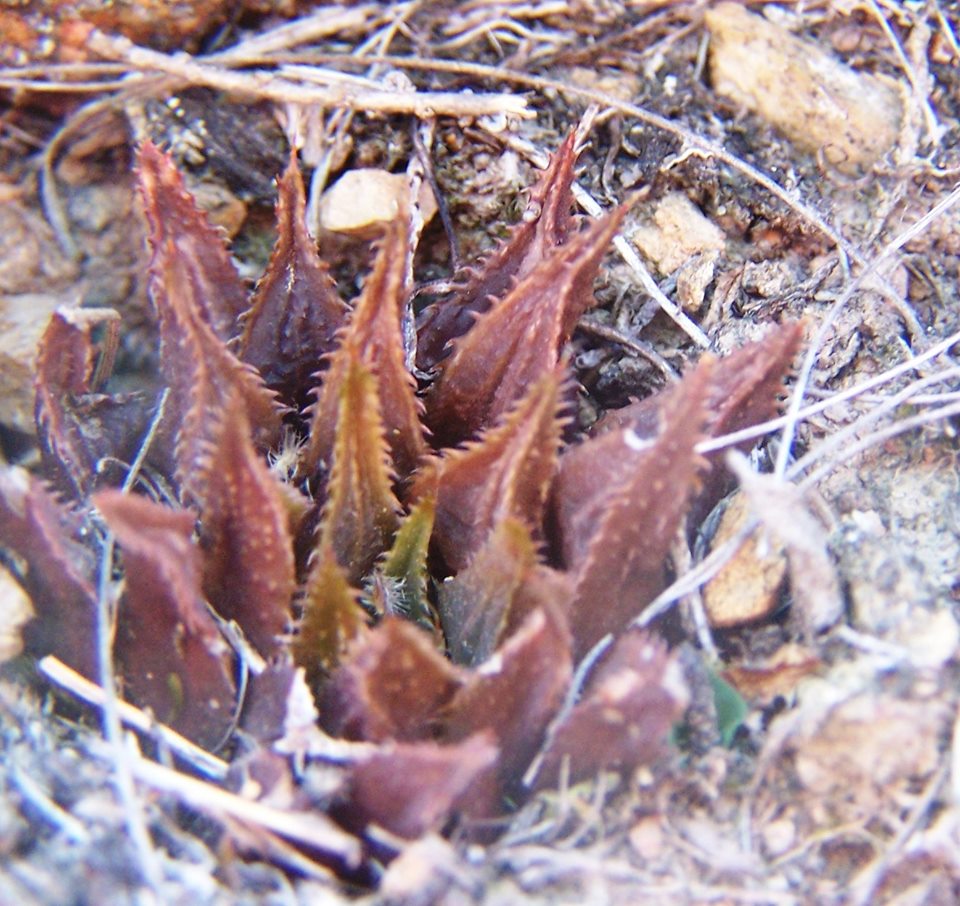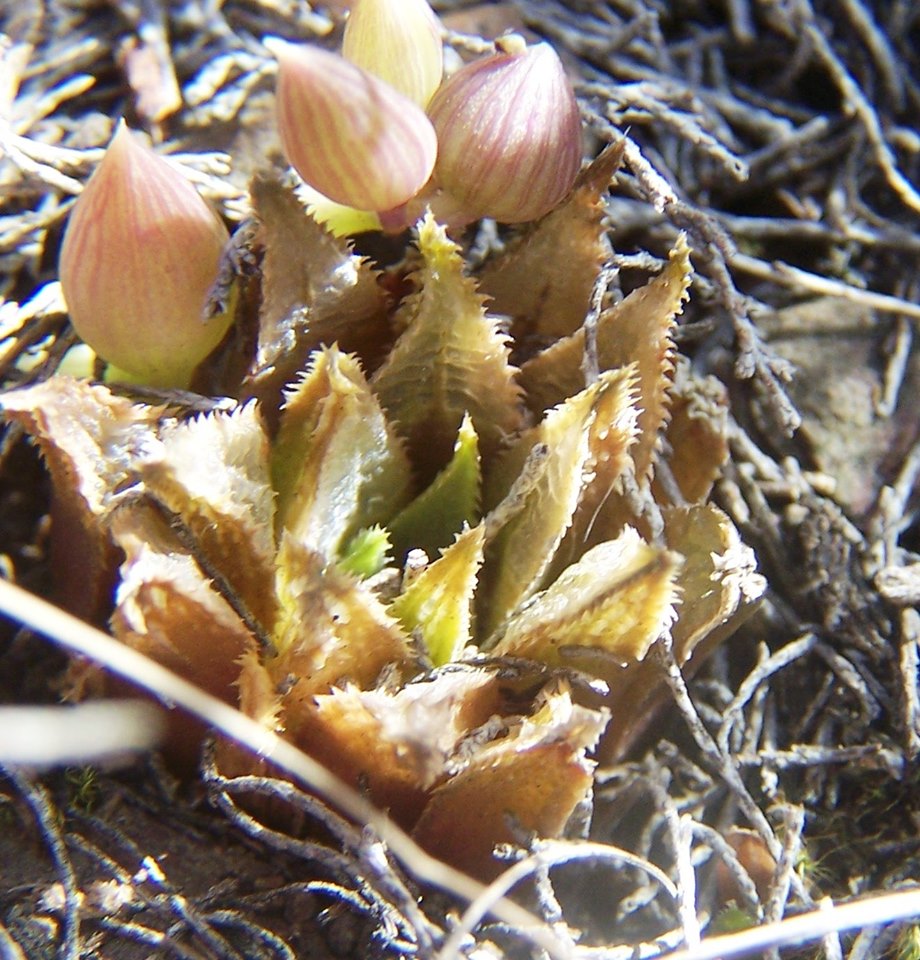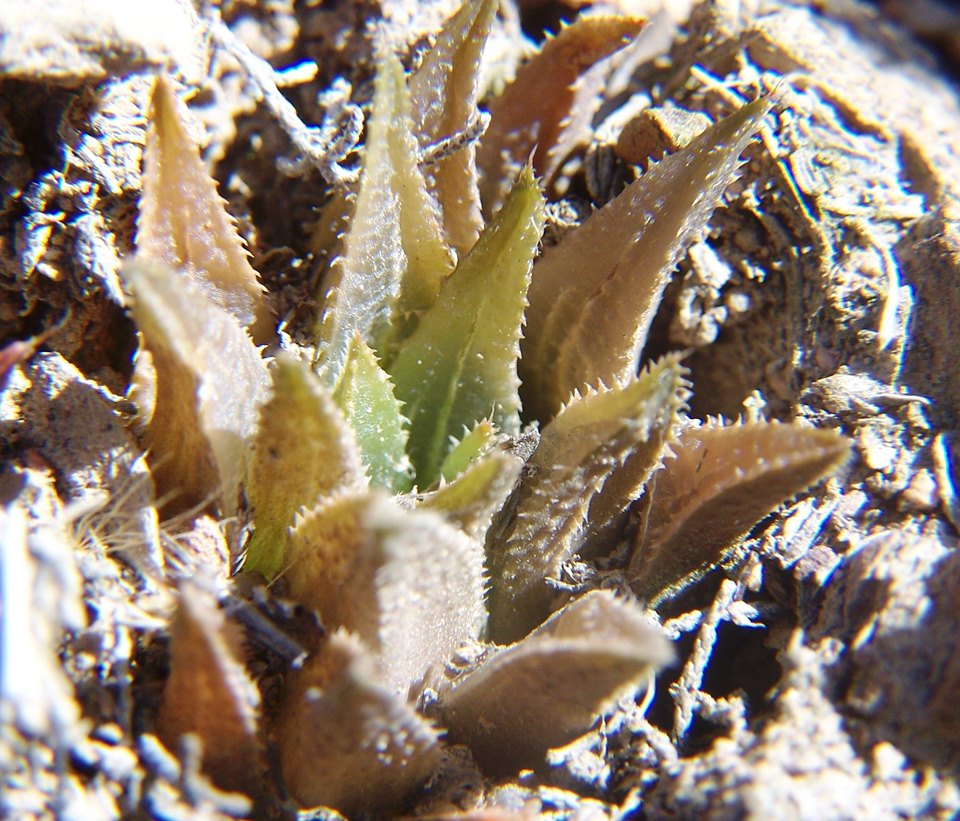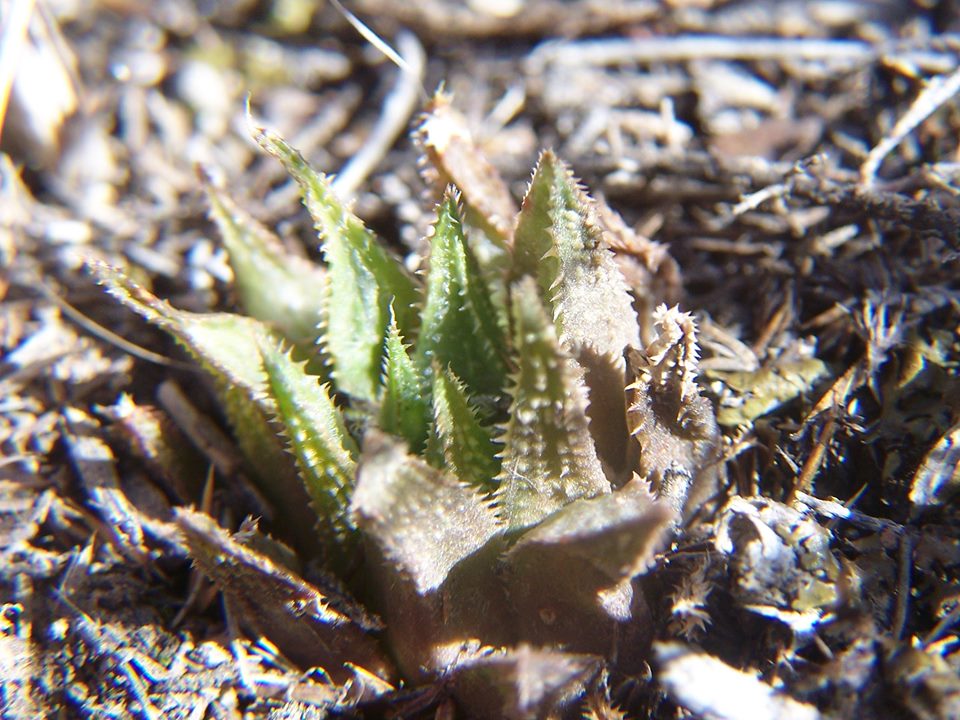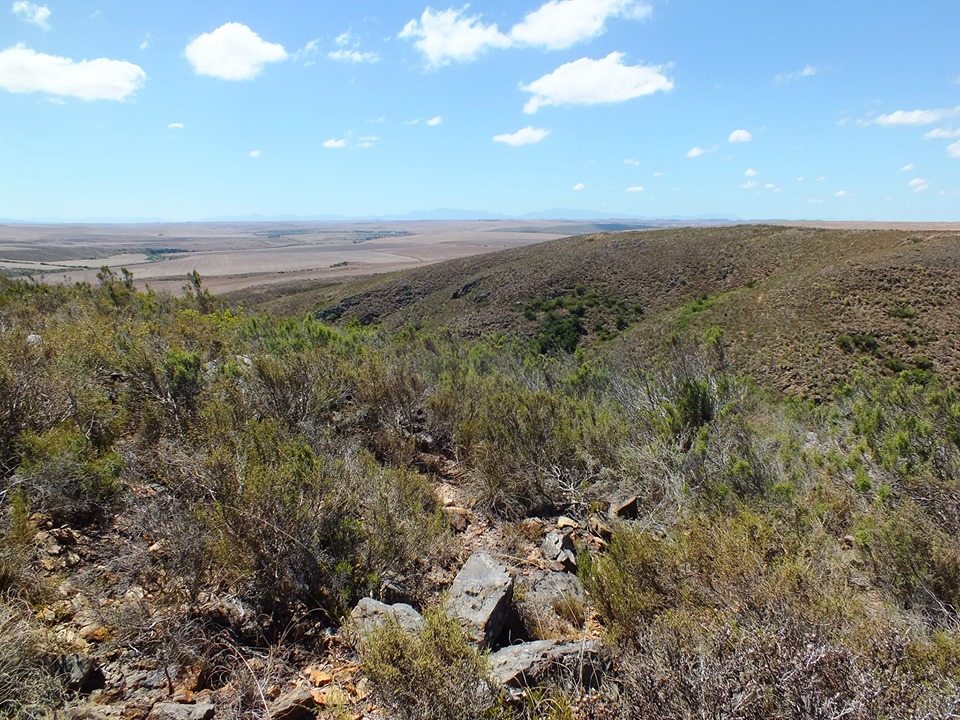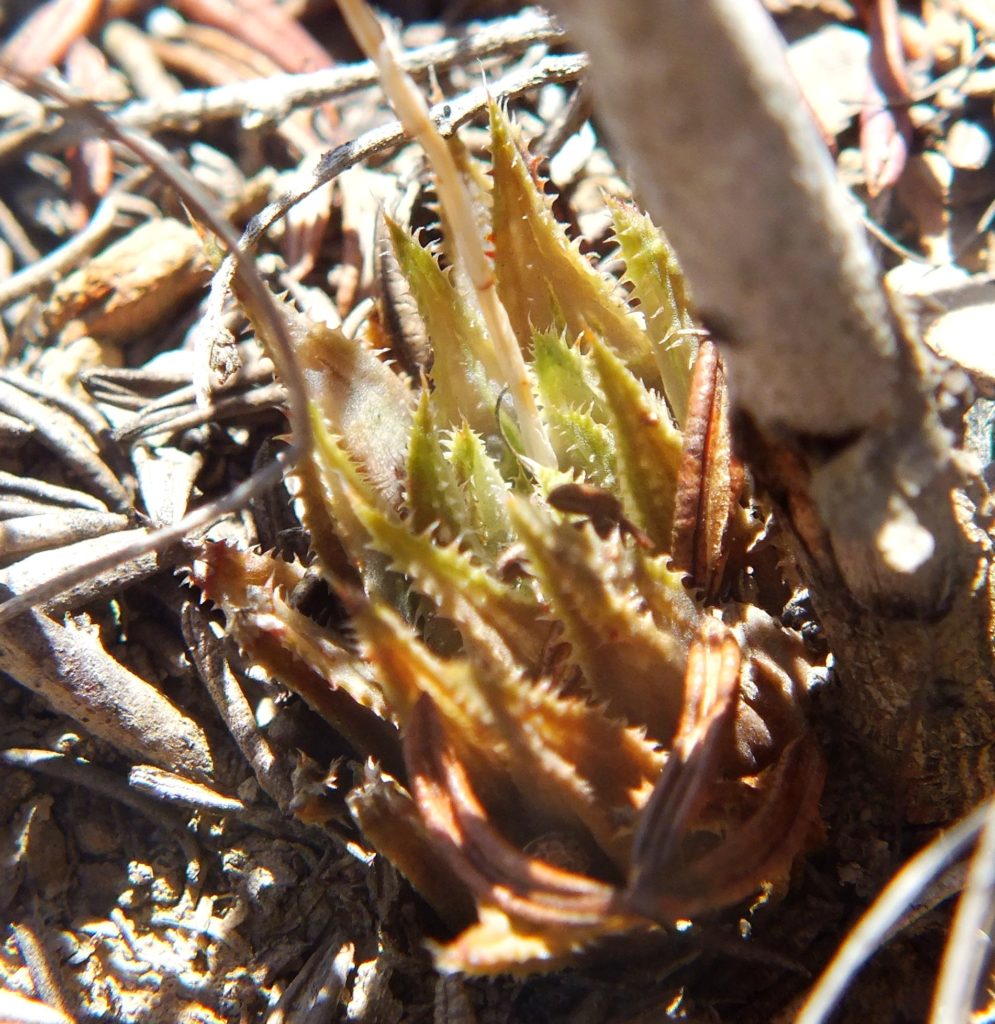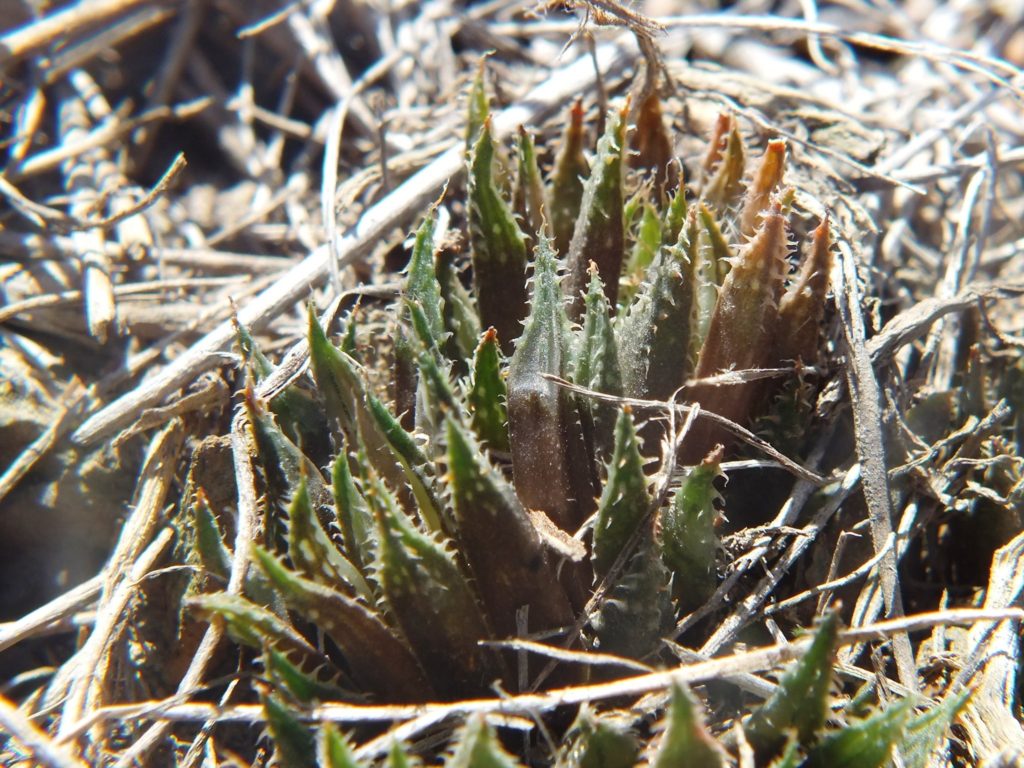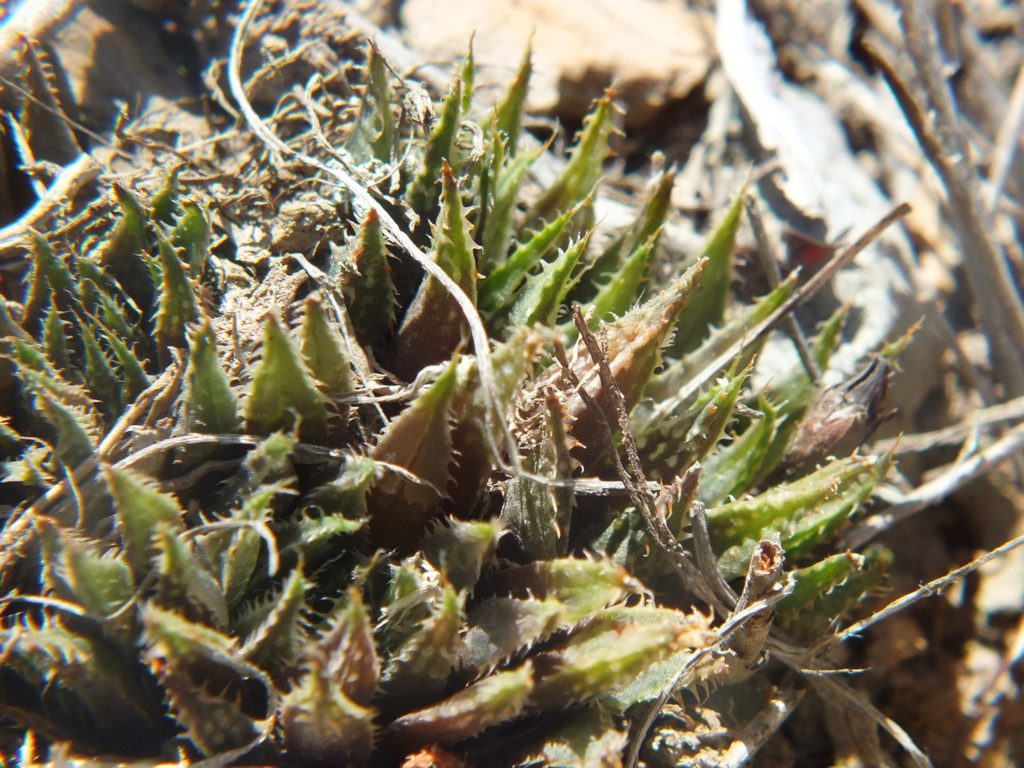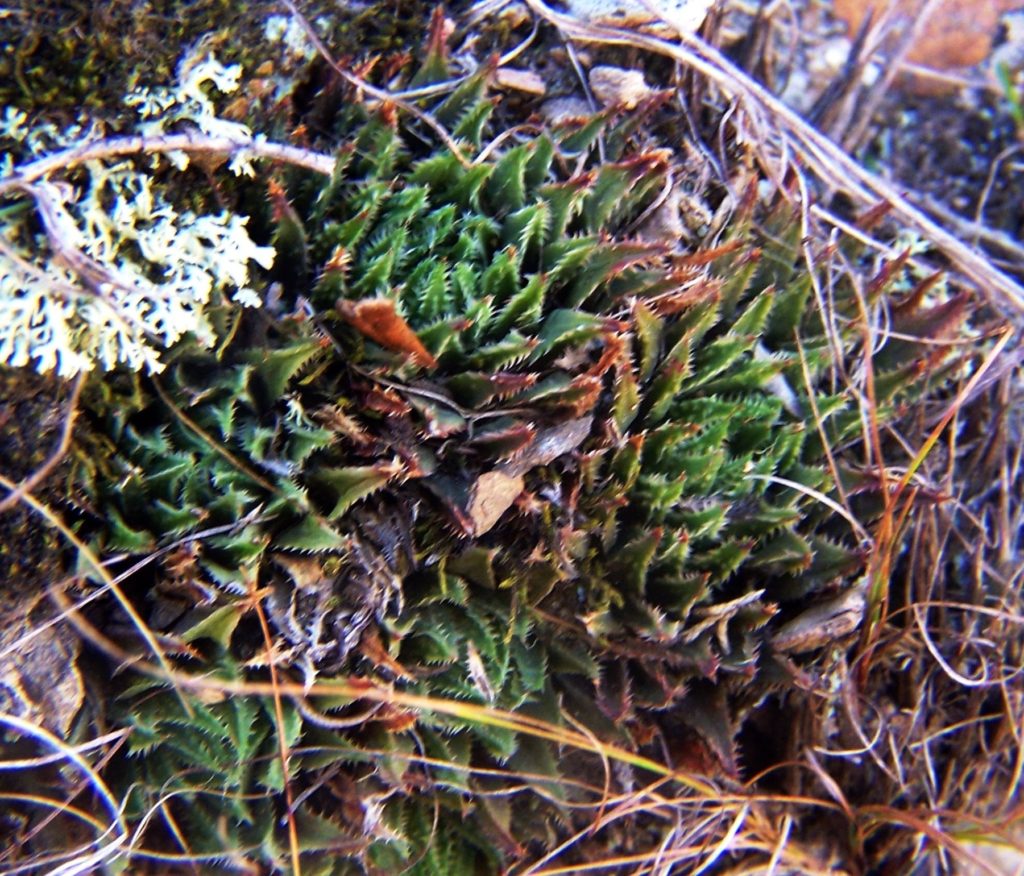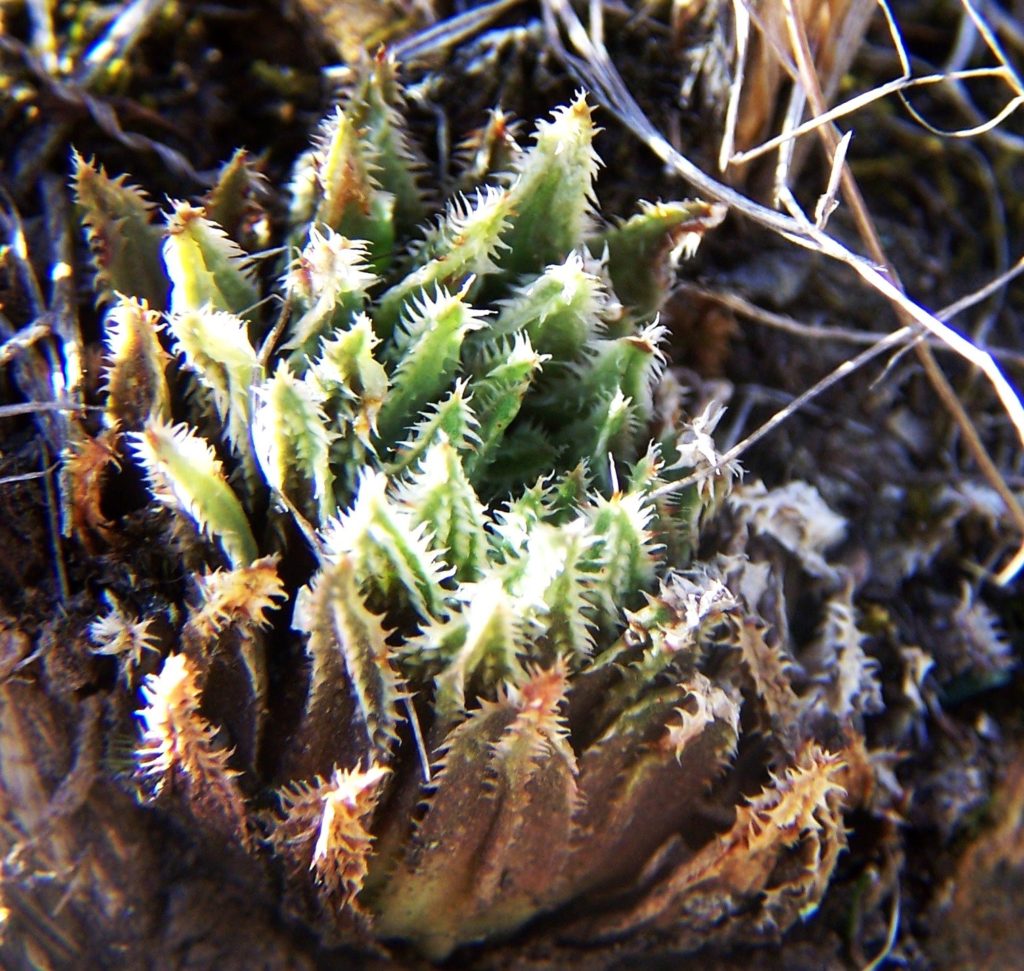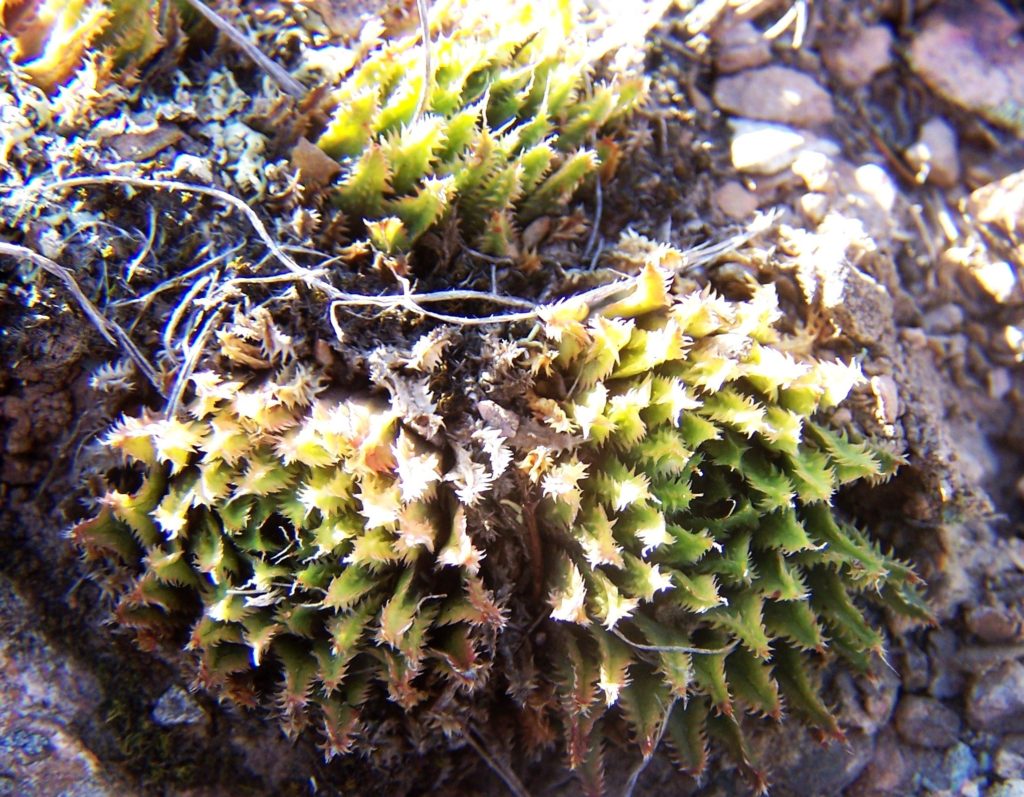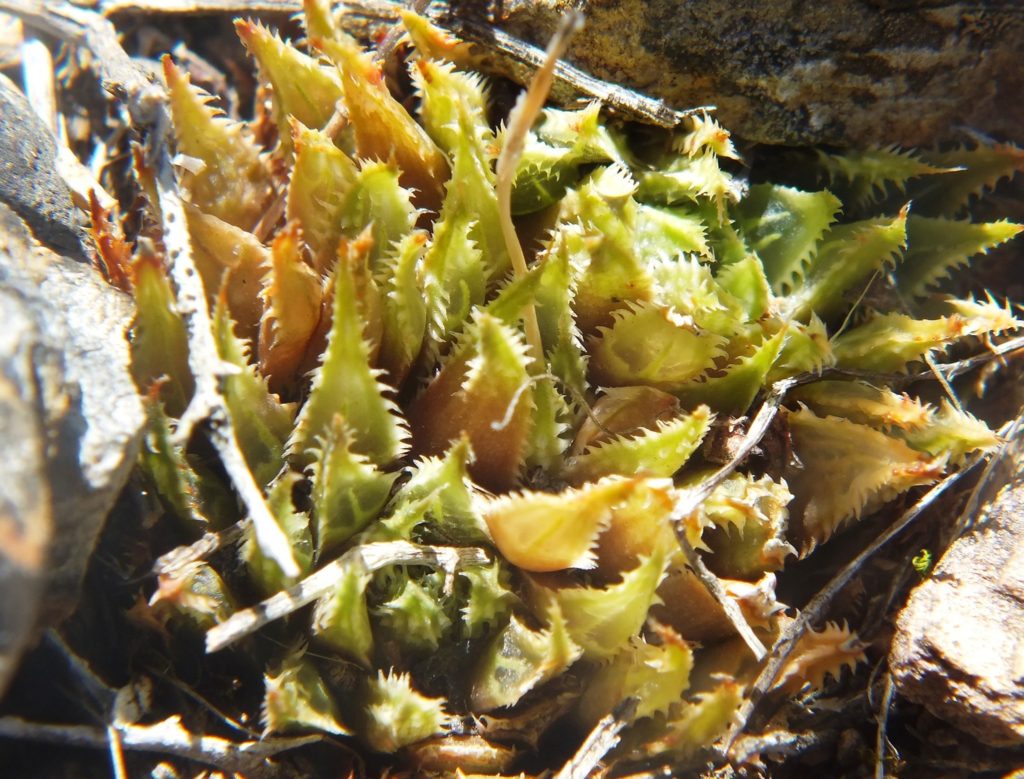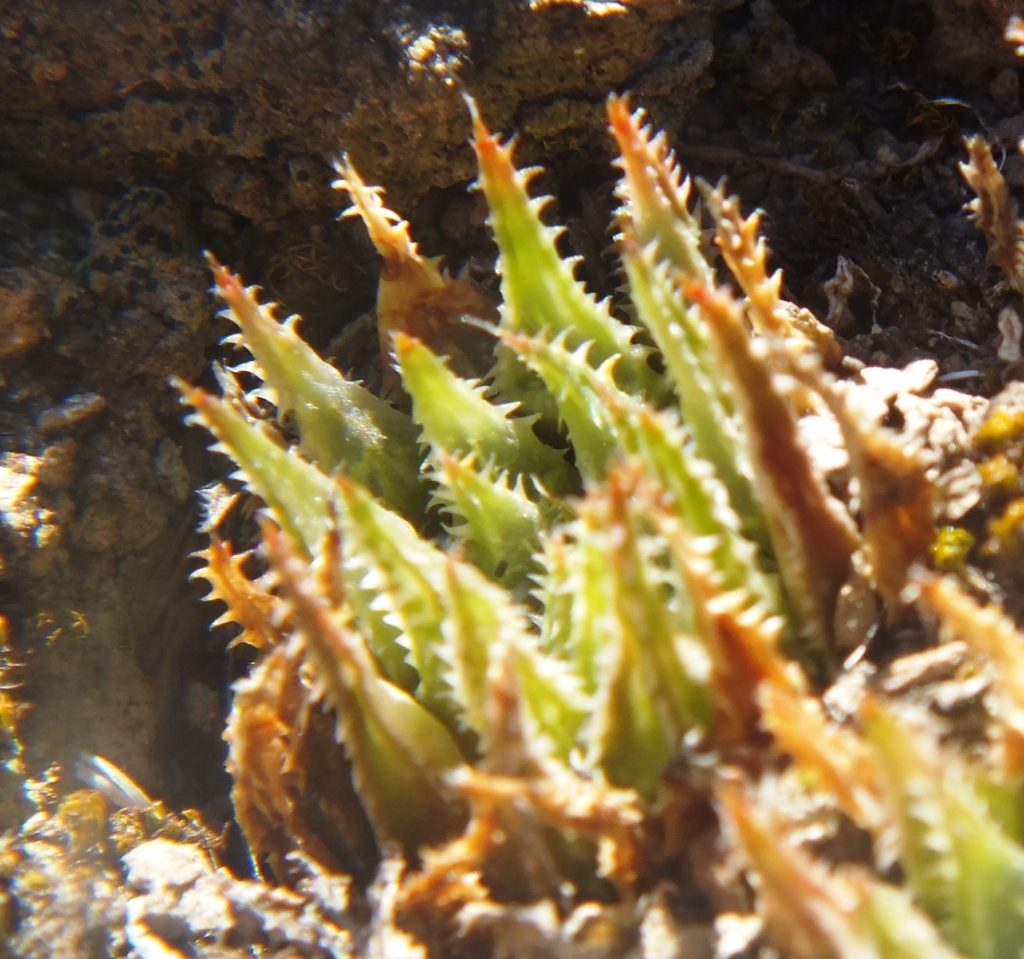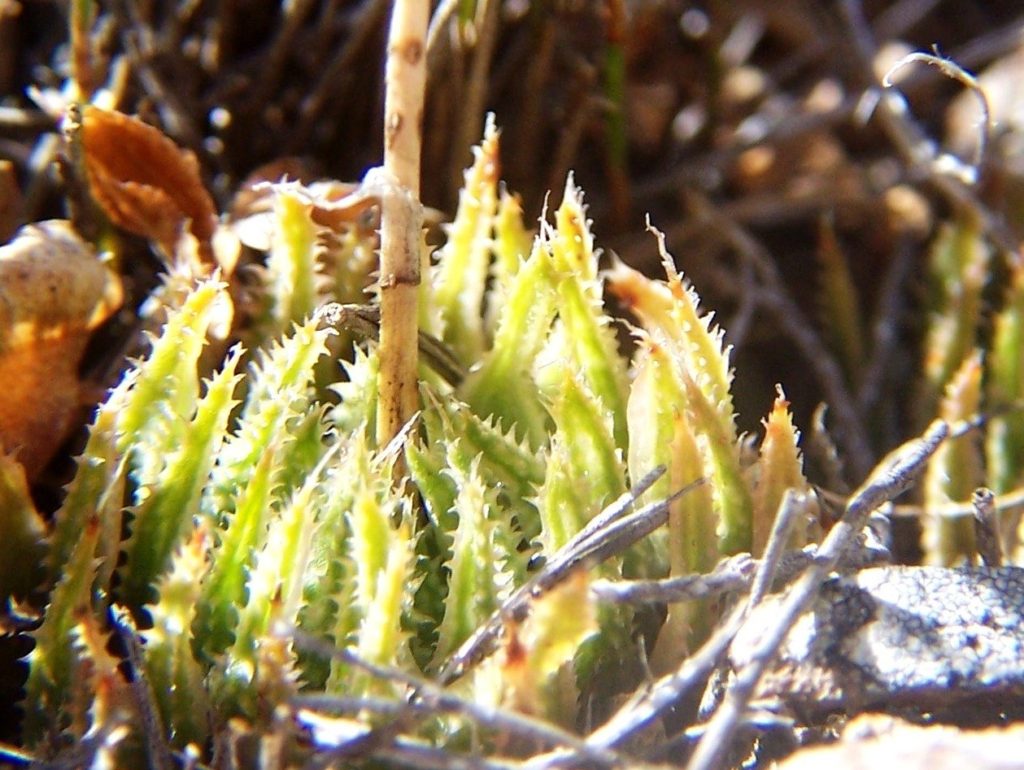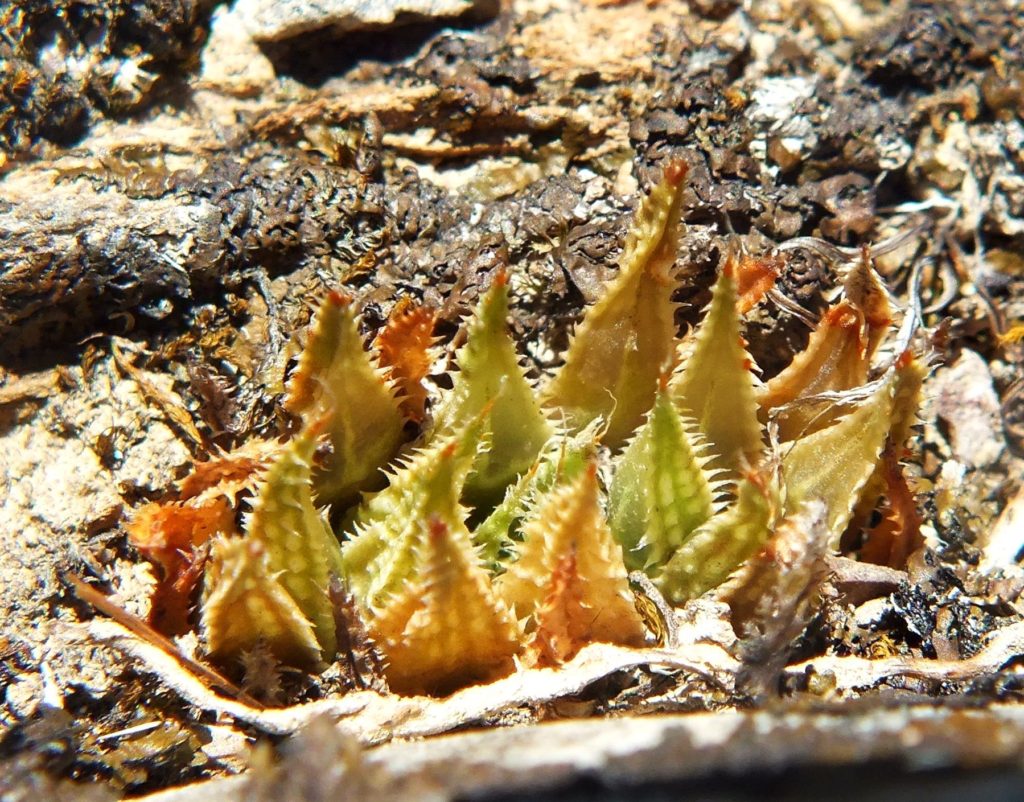87. 2019.8.22, MBB7285 – Starting from the west now is H. mirabilis and again with no two plants quite the same.
88. 2019.8.23, MBB8048 – Skipping out, in a change of mind, 8947, 8052 and 8053, here we are about 800m W of “minor”. It was late February – the mirabiloids (as a general rule) do not like direct sun and are often well hidden and protected in shale cracks and crevices and under sparse or even dense but short plant cover.
Why the impatience? I had some recent interesting correspondence where my correspondent referred to various writers and their respective opinions and followings. Well this is where the problem lies. We ask “who is right?”, instead of “what is true?”. Instead of thinking for ourselves we rely on others to do it for us.
Lawrence Loucka: Have your correspondent read all of Haworthia Updates, then have the conversation again. If your correspondent isn’t willing to make the intellectual investment, then any further dialog would be a waste of time for both of you.
At the very least, read the introduction to Haworthia Revisited.
https://haworthia-updates.haworthia.org/…/haworthia-revisited…/
Bruce Bayer: It does not appear to me that any writer has taken my introductions seriously and there does not appear to be anyone who has proposed an alternate species definition either. As Dr Manning wrote, there is just a blind acceptance of a zoological species definition based on inter-species sterility without any consideration of that issue. Usually the thoughts about the constitution for species is dismissed as personal vagary on the part of past writers and excluding the present author. 😄
89. 2019.8.23, MBB8050 – About 400m west of “minor”, skipping 8049 is 8050. Rather surprising to see how much resemblance there is to H. floribunda? But I was reflecting a bit on history and the first journeys into the interior ca 1652 plus. Have we really learned anything? Lawrence sagely posted the introduction to Revisited written in 1966. Even with all the DNA sequencing, has anything since been said that adds anything to our knowledge of Haworthia? I do not think so. The probability that all these things I suggest are a species “H. retusa”, may indeed be a step closer to reality without actually getting there.
90. 2019.8.25, MBB7821 – Now about 150m west, and the transition to greener, more, and more erect leaves is stronger. These are all just subtle effects on a small scale that occur among all these populations that I suggest are probably the same species. No amount of sequencing, quantification, acrobatics and verbal gymnastics to please collectors and irritate alternate experts, is going to remove the element of doubt and consequent confusion.
91. 2019.8.26, MBB8045 – About 15m away from the original mini-habitat of minor. This multi-leaved habit is not characteristic of the mirabiloids but then just what is?
92. 2019.8.27, KG36/70 – Finally back to the original locality for “minor” using the original collecting number more than 30 years later. What does one make of this? I ended up placing it, rather desperately as a variant of H. rossouwii. There is no better reason than the curious resemblances one finds in various mirabiloid populations to that species. I know H. rossouwii from 9 populations and nowhere is it in the company of any other species. What I have shown is how intimately involved H. floribunda is with this greater retusoid raft of populations. H. rossouwii much less so, but one cannot doubt that there are cross connections. Does it get subsumed into H. mirabilis also despite different flowering time? Depending on DNA sequencing to provide answers when the sampling, analysis and interpretation is done without good insight into the nature of the problem, is not going to provide a satisfactory answer. Especially so when the DNA results so far available suggest so little difference between species.
Jakub Jilemicky: I have once seen rossouwii and mirabilis together – on Oudekraalkop farm.
Bruce Bayer: Thank you Jakub – that is really interesting.

